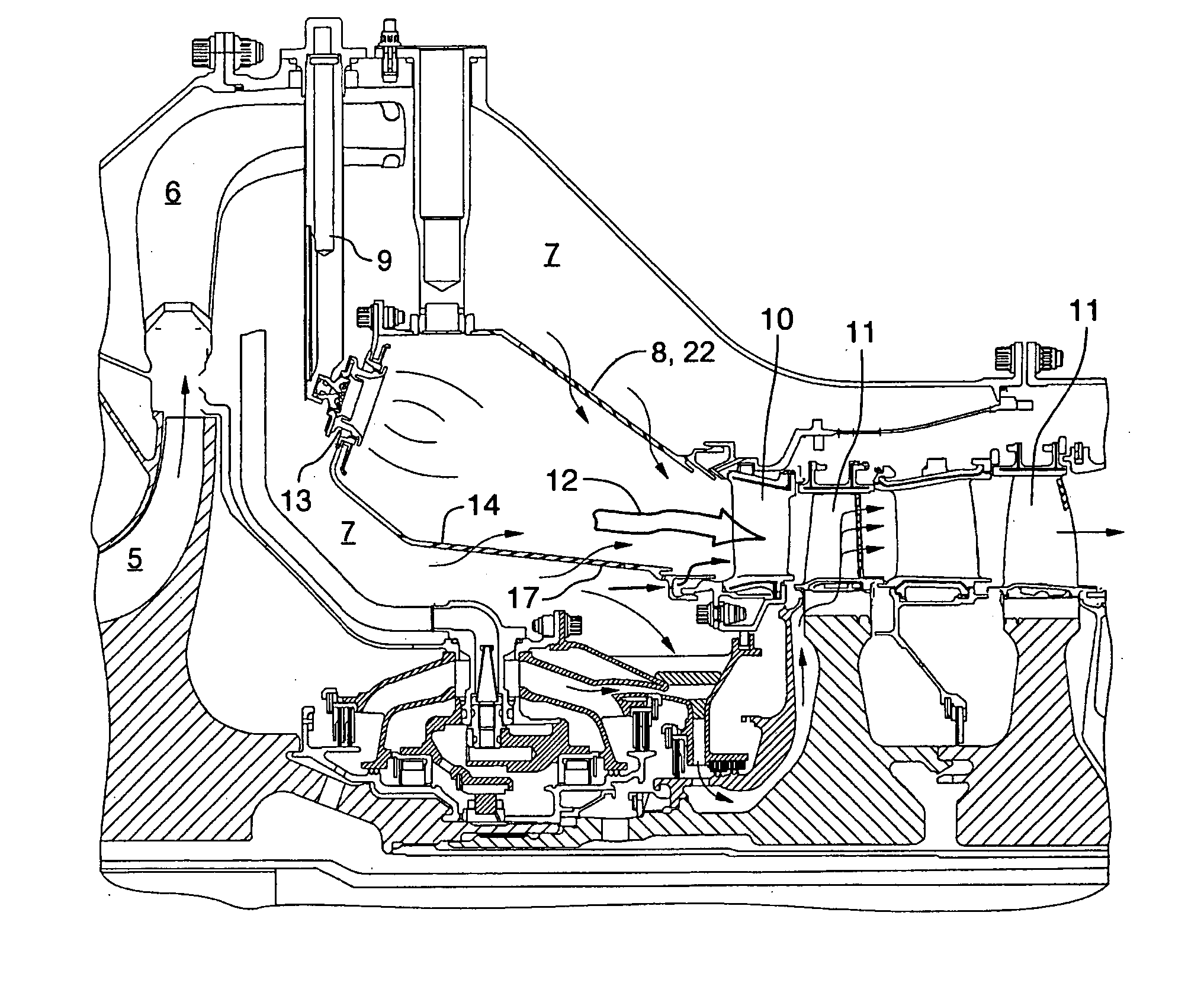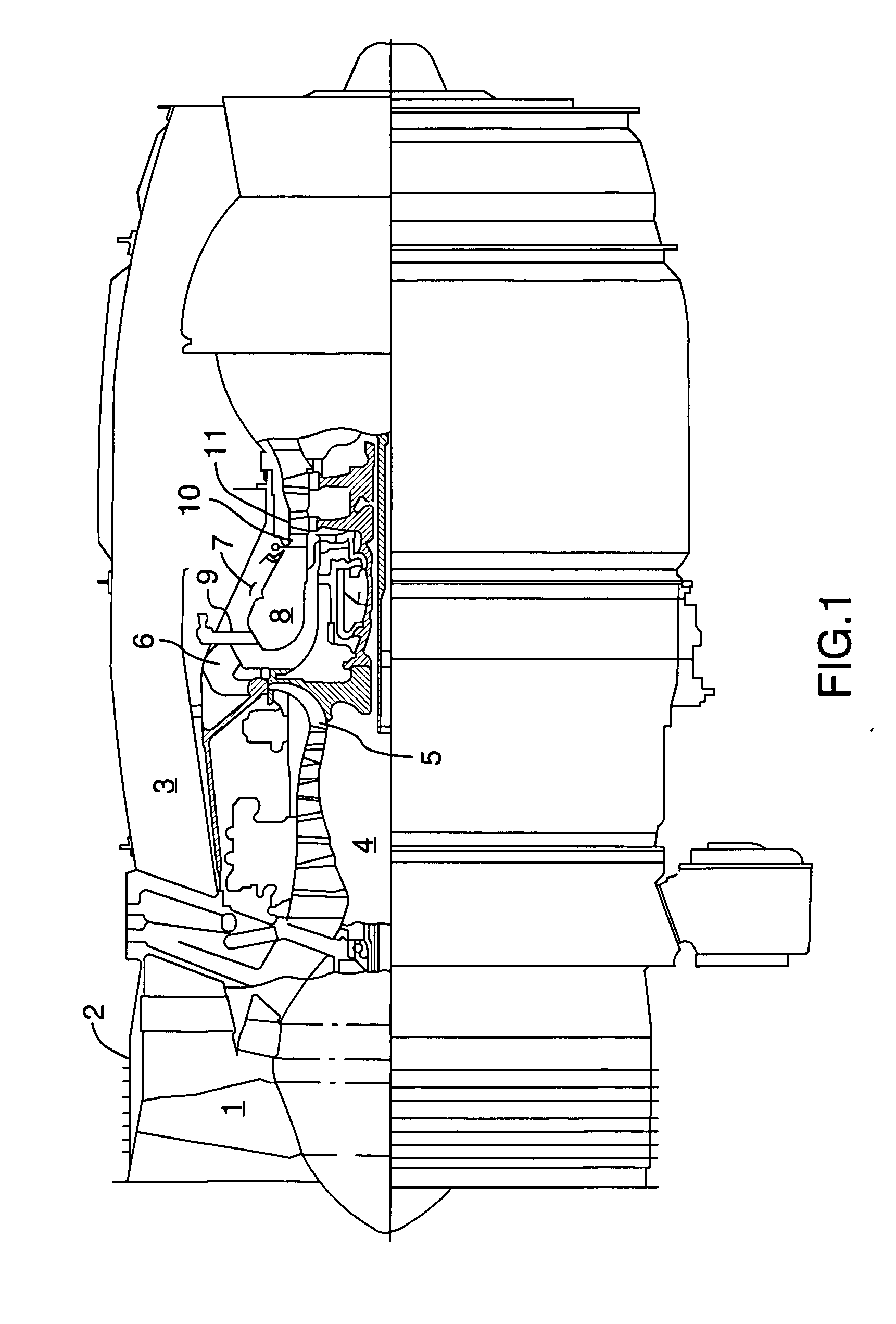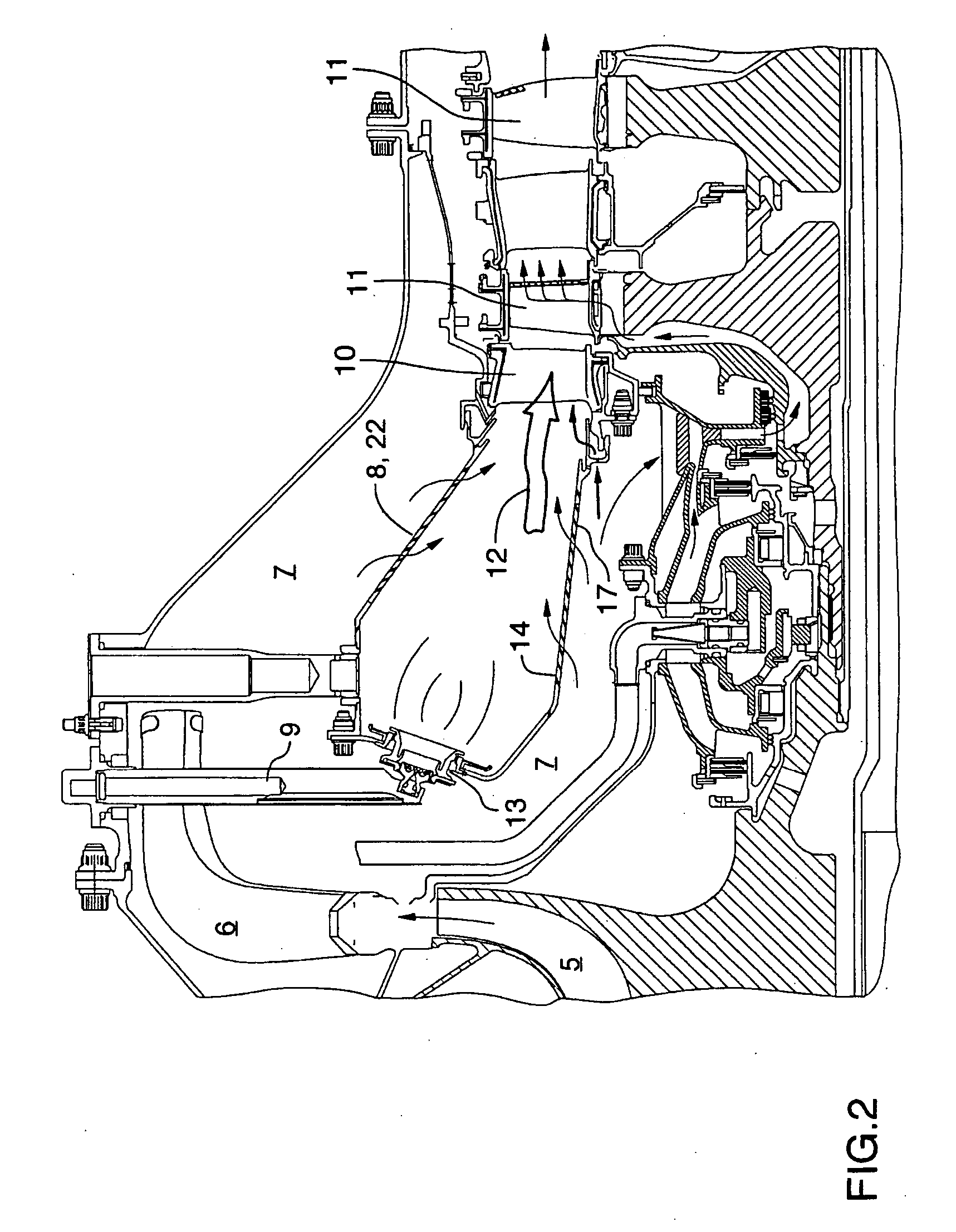Aerodynamic trip to improve acoustic transmission loss and reduce noise level for gas turbine engine
- Summary
- Abstract
- Description
- Claims
- Application Information
AI Technical Summary
Benefits of technology
Problems solved by technology
Method used
Image
Examples
Embodiment Construction
[0020]FIG. 1 shows an axial cross-section through a turbo fan gas turbine engine. It will be understood however that the invention is applicable to any type of engine with a combustor and turbine section such as for example turbo shaft, turbo prop, or auxiliary power units. Air intake into the engine passes over fan blades 1 surrounded by a fan case 2. The air is split into an outer annular flow which passes through the bypass duct 3 and an inner flow which passes through the low-pressure axial compressor 4 and high-pressure centrifugal compressor 5. Compressed air exits the compressor through diffuser 6 and is contained within a plenum 7 that surrounds the combustor 8. Fuel is supplied through the combustor 8 through fuel tubes 9 which is mixed with air from the plenum 7 as it sprays through nozzles into the combustor as a fuel air mixture that is ignited. At portion of the compressed air within the plenum 7 is admitted into the combustor 8 through orifices in the side walls to cre...
PUM
 Login to View More
Login to View More Abstract
Description
Claims
Application Information
 Login to View More
Login to View More - R&D
- Intellectual Property
- Life Sciences
- Materials
- Tech Scout
- Unparalleled Data Quality
- Higher Quality Content
- 60% Fewer Hallucinations
Browse by: Latest US Patents, China's latest patents, Technical Efficacy Thesaurus, Application Domain, Technology Topic, Popular Technical Reports.
© 2025 PatSnap. All rights reserved.Legal|Privacy policy|Modern Slavery Act Transparency Statement|Sitemap|About US| Contact US: help@patsnap.com



